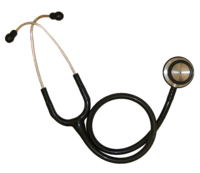
Photo from wikipedia
Abstract Funding Acknowledgements Type of funding sources: Other. Main funding source(s): This study is part of Limburg Clinical Research Center, supported by the foundation Limburg Sterk Merk, province of Limburg,… Click to show full abstract
Abstract Funding Acknowledgements Type of funding sources: Other. Main funding source(s): This study is part of Limburg Clinical Research Center, supported by the foundation Limburg Sterk Merk, province of Limburg, Flemish government, Hasselt University, Ziekenhuis Oost-Limburg and Jessa Hospital. Background Many cardiovascular patients are only seen by a physician once or twice a year unless urgent symptoms occur. However, secondary prevention, including self-management, is important in cardiovascular diseases. The use of digital technologies to follow patients remotely, i.e. telemedicine, is increasing. This creates opportunities to provide a more continuous way of follow-up. It is recommended to involve patients in the development of such tools in order to optimise their implementation in clinical practice. Purpose This survey-based study investigated patients’ perspectives on telemedicine and the defined features/services they consider important for using telemedicine in their (daily) care. Methods At two Belgian hospitals, both cardiology patients with various types of prior telemedicine follow-up and patients who never had a telemonitoring follow-up were included. A new self-developed survey was implemented in Qualtrics and took 5-10 minutes to complete. Patients with previous telemedicine follow-up were contacted by phone. If they agreed to participate, the survey was sent by email and filled in online. On the other hand, patients in the control group were included at the cardiology ward and filled in the survey independently on a tablet. The study was approved by the local Ethical Committees. Results In total, 231 patients (191 telemedicine and 40 controls) of the 786 contacted patients were included. Most patients owned a smartphone (84.8%) and only 2.2% of the patients did not own any digital device. As shown in Figure 1, patients with previous use of telemedicine are more interested in such new technologies than control patients (p=0.020). Of the defined services, personalized medicine in various formats attracted most interest in both groups (i.e. personalized health tips based on the medical history, 89.6%; personalized feedback on entered health parameters, 86.1%; and (personalized) information about their medical condition, 85.3%). Recommendation by a doctor is a motivating factor to use telemedicine (84.8%), while a decrease of in-person visits and replacing these with telemedicine follow-up is rather a barrier (24.7%). Two-thirds of the patients in this Belgian cohort (67.1%) would be willing to pay for telemedicine tools, with more patients in the experienced telemedicine group (69.6%) compared to the control group (55.0%; p=0.073). The patients willing to pay, would pay a mean monthly sum between €12.2 and €21.8 or a yearly global sum between €51.5 and €59.5 for telemedicine that supplements their regular insurance. Conclusion Cardiovascular patients have a positive attitude towards telemedicine, especially when it allows for more personalized care and lifestyle advice. Previous use of telemedicine led to a higher willingness to pay. Addressing patient concerns, highlighting the complementary value of telemedicine services, and maintaining equal access for all patients are important for effective implementation. Personal opinion using telemedicine
Journal Title: Europace
Year Published: 2023
Link to full text (if available)
Share on Social Media: Sign Up to like & get
recommendations!